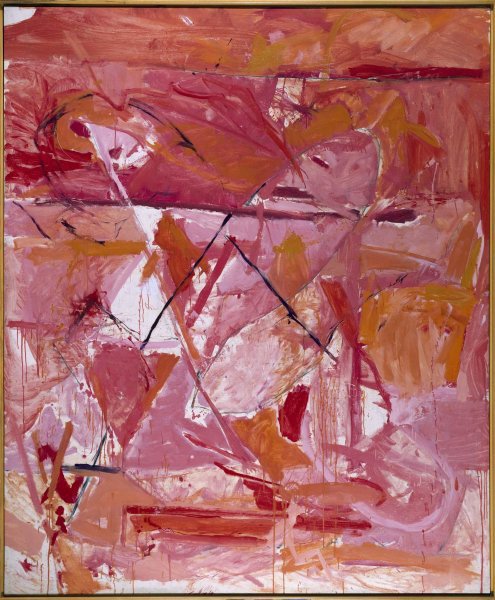Idea: Painting-Force
dal 5/11/2013 al 17/5/2014
Segnalato da
Alfonso Albacete
Miguel Angel Campano
Ferran García Sevilla
Juan Navarro Baldeweg
Manolo Quejido
Manuel Quejido
Armando Montesinos
5/11/2013
Idea: Painting-Force
Palacio de Velazquez, Madrid
The Hinge Between the 1970s and 1980s. The exhibition looks at a specific situation of the Spanish artistic scene, in which the crisis of the avantgarde and of the idea of modernity becomes visible through the pictorial practice by 5 five artists represented.

Curatorship Armando Montesinos
Artists: Alfonso Albacete, Miguel Ángel Campano, Ferran García Sevilla, Juan Navarro Baldeweg, Manolo Quejido (Manuel Quejido)
Idea: Painting-Force presents a set of works produced
in Spain between the years 1978 and 1984, a historical
period of profound social and cultural transformations.
The exhibition looks at a specific situation of the
Spanish artistic scene, in which the crisis of the avantgarde and of the idea of modernity becomes visible
through the pictorial practice, understood as a territory
for thought and the production of creative strategies, of
the five artists represented: Alfonso Albacete, Miguel
Ángel Campano, Ferran Garcia Sevilla, Juan Navarro
Baldeweg and Manolo Quejido.
The exhibition is situated on the hinge between the
seventies and eighties, a moment of crisis, in the
deepest sense of the word, of the “modern project”.
The analyses and redefinitions of models brought
about by conceptual practices, among others, were
the symptom, if not the cause, of a major shift in the
aesthetic paradigm. The crisis, which emerged from
a perception of the faultline between reality and
ideological explanations of it, implied readdressing
the concepts of the Academy and Tradition. Is another
form of modernism possible?
These artists then turned their gaze, on the one hand,
toward the original agents of the modern avant-garde,
like Cézanne, Matisse and Picasso, and on the other
toward their North American successors, such as De
Kooning, Motherwell and Jasper Johns. However, they
also looked toward other epochs (Poussin, Velázquez)
and other cultures (India, North Africa), though not
on the basis of mimetic norms or the modern demand
for originality, but through a re-reading of the original
processes that permitted a critical and displaced use of
their procedures. Painting became an essay on painting
itself. In transition and in tension, this was painting as,
a system for the perception of thought processes. These
artists saw painting at that moment as an event, though
not as action painting, which is the expression of a prior
subject, but as the process of construction of a subject.
It was not, as some may have understood or interpreted
it at the time, a “return” to the “order” of the classical
disciplines as a rejection of the artistic discourses of
the seventies, nor was it a “return to painting” or to
the aestheticist “pleasure of painting”. Rather, it was
a programmatic convergence upon its practice.
During the years of newly-won democratic liberties
in which the pieces presented in this exhibition were
produced, the work of the five artists took place in a no
man’s land, a fold in time, an artistic ambience that was
enormously active but structurally weak, and soon went
from inhabiting a formalist cultural milieu, acritical if
not dogmatic, to embracing the market and the aesthetic
of success.
The criterion for gathering them together in this exhibition is by no means their constitution of a group.
The focus is the (post)conceptual affiliation of several
of them, whose investigations were to converge on the
practice of painting, their understanding that Tradition was not a closed conservative structure but an energy supply for contemporary work, and their common
desire to reflect both analytically and passionately on
the substantive matter of painting capable of surpassing the abstraction/figuration dichotomy, since the
figurative here merely anchors the gaze upon the nature of things.
Opening the show is Juan Navarro Baldeweg’s 1976
installation Interior V. Luz y metales which provides a
nexus with the conceptual languages investigated previously, and announces, in the artist’s own words, “the
hunger for painting” which would initiate the slippage
toward the pictorial practice that makes up most of the
exhibition.
Round table November 15, 6:00 p.m. Nouvel Building, Auditorium 200
Encounter. Idea: Painting-Force
Organized by: Museo Nacional Centro de Arte Reina Sofía
Image: Miguel Ángel Campano, El zurdo (The Left-Handed Man), 1980. Oil on canvas 248 x 203 cm
Head of Press Office: Concha Iglesias
Assistants: Paz Ridruejo and Luisa Hedo Phone (+34) 91 7741005 / 06 prensa1@museoreinasofia.es - prensa2@museoreinasofia.es
Museo Nacional Centro de Arte Reina Sofía - Palacio de Velázquez
Parque de El Retiro, 28009 Madrid
Opening hours from October to March
Every day from 10:00 a.m. to 6:00 p.m.
Entrance free



